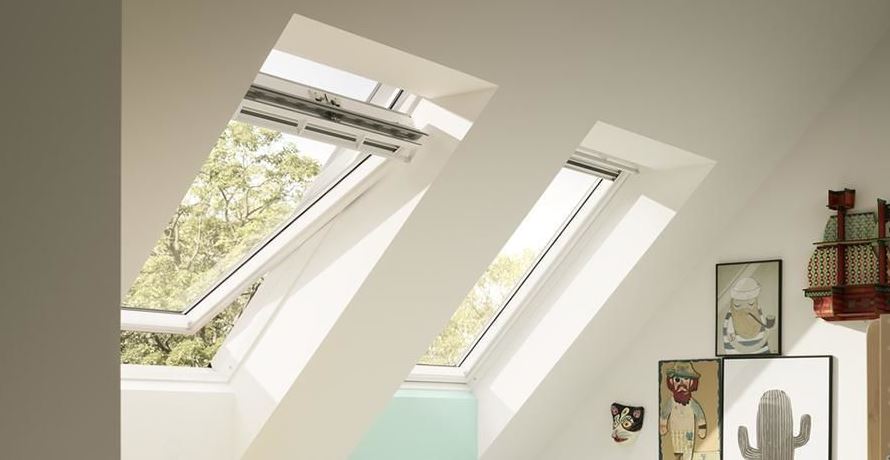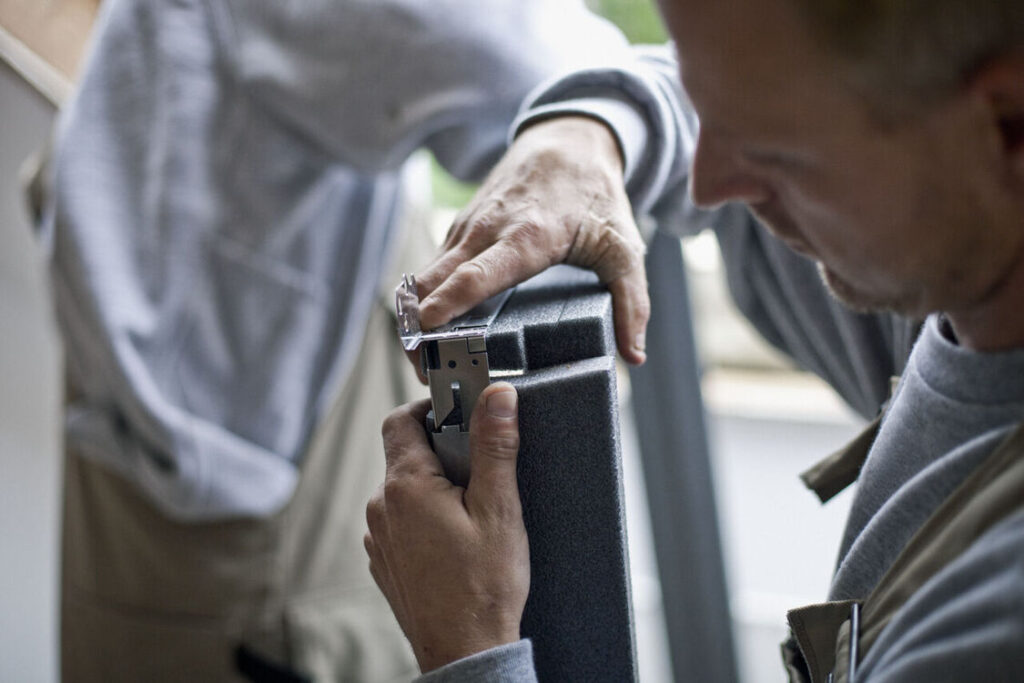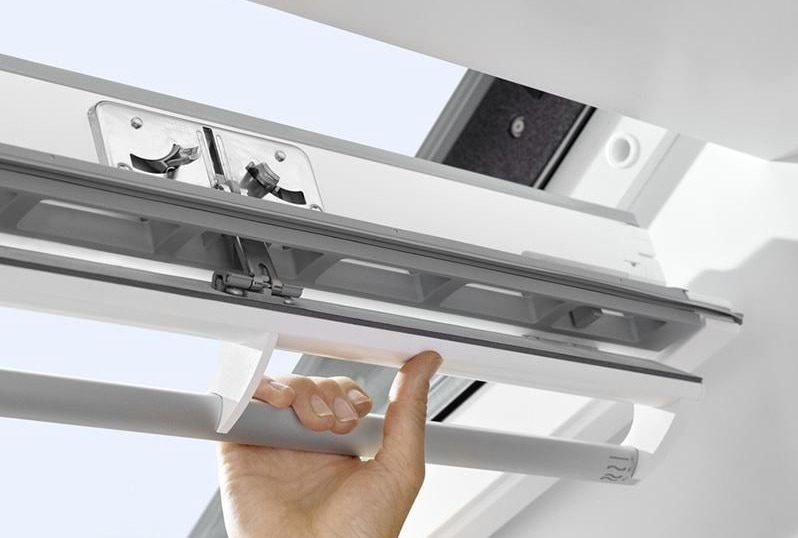Before fitting your insulation collar, make sure you refer to the easy-to-use VELUX labels on the collar packaging to make sure everything matches up to your corresponding window. As with all VELUX packaging, it can easily be peeled open with the tabs provided, removing the need for sharp box cutters. Inside you'll find a separate set of complete instructions and a QR code to make the installation process easier.
When you've opened up the packaging, you'll see two longer pieces to cover the length of your window as well as two shorter pieces for the top and bottom.
There are also variations available on the thicknesses of the foam insulation that can easily be compressed, peeled off or used at the maximum tolerance according to your specific needs. The individual pieces of the insulation collar will easily clip together in the corners to create the shape of a frame that can be fitted through your window opening easily. Simply feed it through the open space in your roof and lower it down so the bottom of the collar rests on the bottom section of the roof window opening. Carefully lower the other parts of the window so it catches on the battens, and once complete, you have an insulated framework onto which the window can be installed.
When installing your window on top of the insulation collar, always feed the window through the opening and connect it gently onto the bottom section first to avoid any accidents. As for the rest of the window, address the top and side parts of the window frame by gently pushing it onto the insulation. The insulation may prevent a secure connection at first, so carefully press in the insulation, focussing on each side independently so that the window can simply slot into place.
Next, fix the window into place from the base, using the screws provided to drill into the bottom brackets. You'll notice that there are longer and shorter screws available with the kit – the longer screws are crucial as they are designed to drill into the hole at the furthest corner of your bracket. You'll also notice that VELUX has provided two screw hole options here next to each other in case there happens to be an existing screwhead in the way on your roof structure that prevents you from drilling the screws in successfully.
Once drilled, these longer screws will firmly secure your window into the rafter and overall roof construction. The smaller screws provided will secure the insulation collar to the window itself. Always read the instructions provided to make sure both the longer and shorter screws are installed in the right location. Simply duplicate the process on the opposite bracket.
The top brackets require a slightly different process. Using the shorter screws provided, partially drill in these screws into the centre of the horizontal slot and stop when they sit about 10mm from the bracket – this allows for any levelling and adjustments later on. Do the same for the opposite side.
Use the sash to work out if everything in the frame is square and level. Simply pick up the sash by using your left hand to balance the sash and your right hand to support the weight of it. Having your right hand underneath the sash will also make it easier to pull out the barrel bolt so it can lock into the bottom of the frame.
Once your window is in the frame, the sash can easily clip into the frame hinges, securing your window into place so that you can begin to check that everything is properly squared up before moving onto the next step.
Installing The Underfelt Collar & Drainage System
The underfelt collar is a breathable membrane with a pair of ordinary flat sections and pleated side sections. The pleated parts are designed to make it easier to dress over and secure to the roof battens.
First off, open up the underfelt collar and simply arrange it over the outer roof window frame. Using the butyl strips around the edge of the underfelt collar, peel the butyl covers off gradually and stick the strips around the frame, working slowly around and keeping the underfelt smooth with your other hand to create a smart end result. You'll also see there are butyl strip tabs to fold round and secure neatly to each corner of the window. Simply repeat on all four external edges before moving onto the next section.
To keep the base section of the underfelt material secured to your roof, it needs to slip beneath the battens below the window. Simply lever up the batten slightly (using a claw hammer, or similar) and feed the membrane underneath, adjusting the material so that it's neat and flush with the bottom section of the window. Afterwards, simply fix the batten back into place.
The next step is to arrange the pleats. The clever pleated design will fit around the battens on the sides and can be easily stapled into place.
Once you're happy with the pleat arrangements, staple them on top of the batten you're working on and both sides so you have 3 staples applied per batten. Repeat the process on all the other pleat covered battens.


